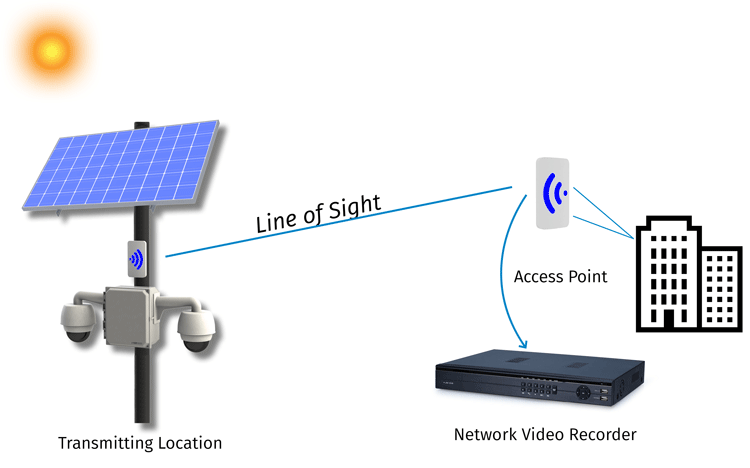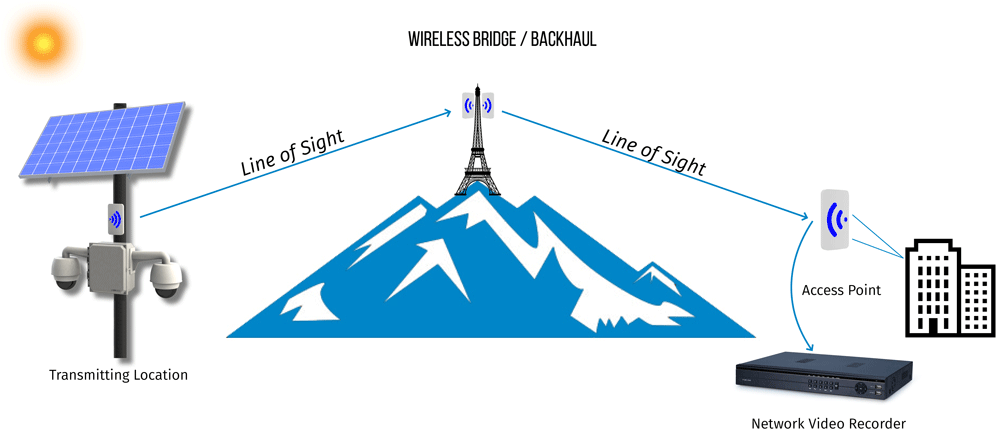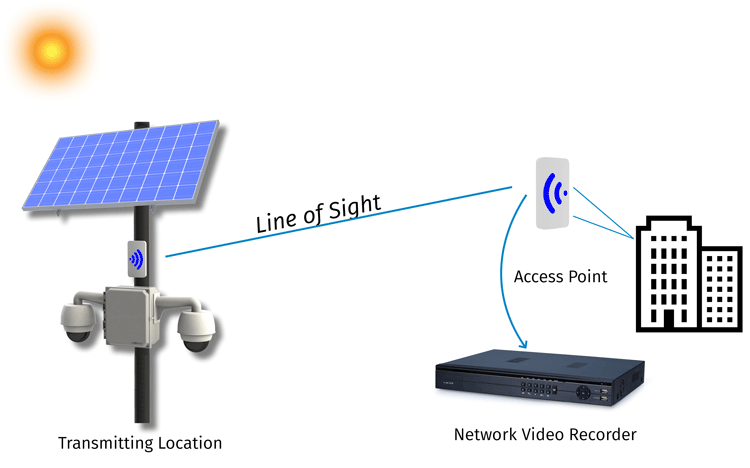In the wireless surveillance world, local Point to Point Radio Networks are one of the most popular methods of transmitting video feed for a network surveillance system.
And here’s three reasons why:
Point to Point Radio Networks have clear advantages, being cost-effective, simple to set up, and low maintenance over the long term.
What is a Point to Point Network (P2P)?
In its simplest form a Point to Point Network (abbreviated as P2P) consists of two antennas. One antenna is configured as a transmitting radio, while the other is set as a receiving radio (also known as an Access Point).
The transmitting antenna is installed at the same location as the IP Camera, and communicates with the camera through a CAT-5 Ethernet cable.
The signal from the camera is then broadcasted to the receiving antenna, where another Ethernet cable connects the radio to a Network Video Recorder (NVR).

How to View Live Network Video Remotely
Typically the Access Point and NVR are located at the facility responsible for managing the property. If Internet access is available at this location, both recorded footage and live video can be viewed remotely from a computer, tablet or smart phone. This is done by establishing Port Forwarding at the Access Point.
IC Real Time put together this guide on setting up Port Forwarding.
Point to Point Networks Need Clear Line of Sight
One limitation to consider when setting up a Point to Point Radio Network is the need for Line of Sight between communicating antennas. While this type of network can communicate surveillance feed for many miles, the path between the antennas must be free of any obstructions. These obstructions can include hills / mountains, tree or ridge lines, or tall buildings.

If Line of Sight is not achievable between the Transmitting Radio and the Access Point, additional radios can be placed to create a Wireless Bridge (also known as a “Backhaul”). To create a Wireless Bridge you will need two additional radios, one configured as the receiver and the other as the transmitter.
The radio that is configured as the receiver or Access Point, is set to communicate with the transmitting radio located at the surveillance sight. The second radio is set as the transmitter, and is set to communicate with the Access Point located at the recording site. The two radios that make up the bridge communicate with one another through an Ethernet Cable and bridge the gap between the surveillance site and the recording site.
What are Mesh Networks?
Often times more than one IP camera will need to transmit to a single recording location. This is easily accomplished simply by adding more transmitting locations and / or Backhauls. When multiple Transmitting Radios, Wireless Bridges, or Access Points are interconnected, it is referred to as a Mesh Network. This allows network internet for remote surveillance in the mesh network.

KBC Networks and AvaLan Wireless both sell high quality wireless products that have been hardened for outdoor usage, and we recommend both of them for creating a Local Point to Point Network for a Wireless Surveillance System.


Leave a Reply